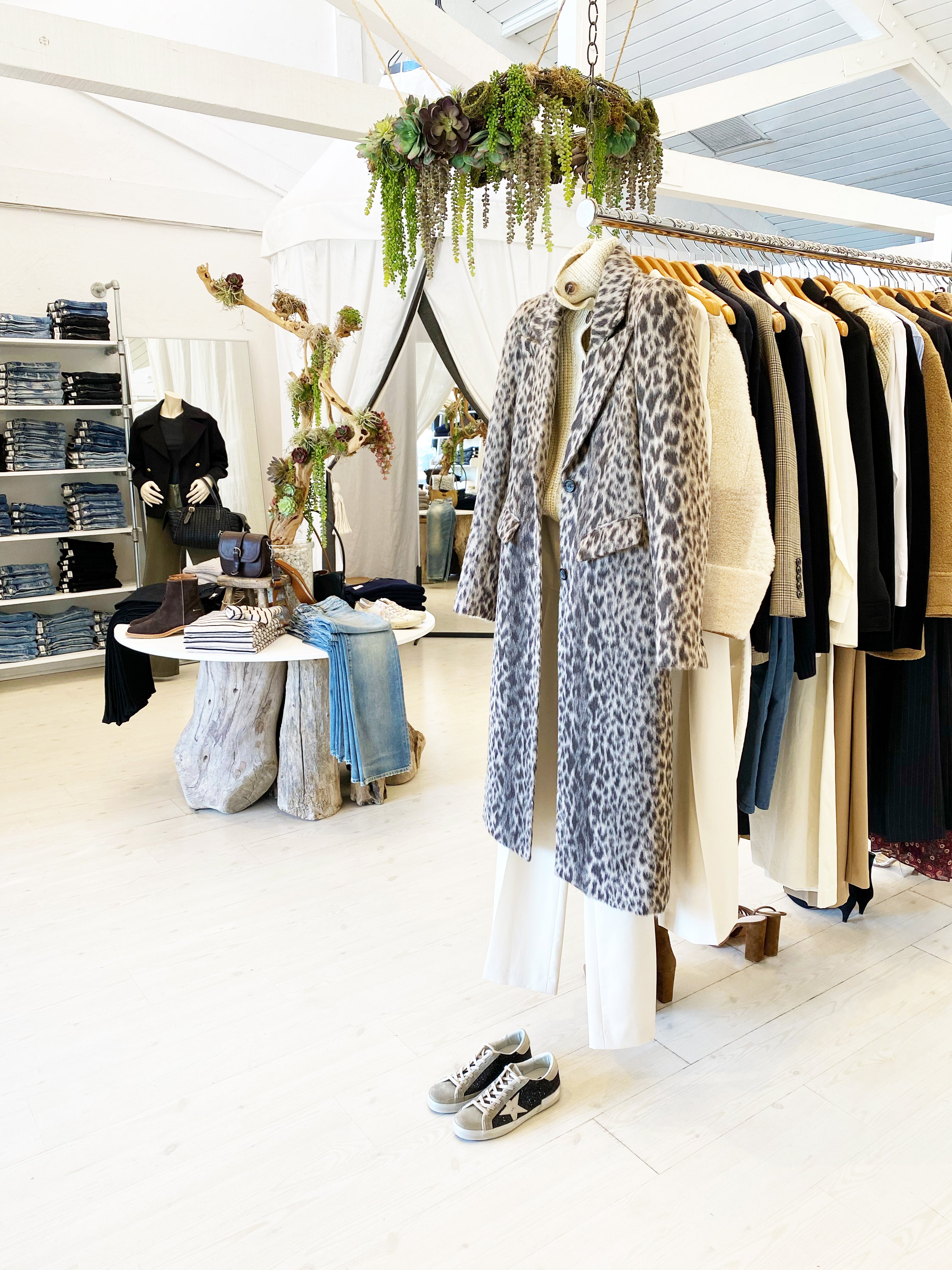Lasting Fashion: Exactly How Eco-Friendly Garments Is Shaping the Future of Design
As the style sector faces enhancing analysis over its environmental impact, the rise of sustainable style uses an appealing choice that straightens design with environmental obligation. Employing innovative materials such as recycled fibers and plant-based fabrics, together with advanced techniques like electronic and 3D printing, designers are redefining what it indicates to be fashionable in the contemporary age. Concurrently, the growing appeal of upcycling and second hand society is fostering a shift towards a round economy. Exactly how does this motion genuinely influence the future trajectory of fashion, and what obstacles exist ahead in its prevalent fostering?
Innovative Lasting Products
As the style sector grapples with its ecological influence, cutting-edge sustainable products have actually emerged as an essential remedy for reducing ecological footprints. These materials not just reduce dependency on fossil gas yet additionally minimize unsafe pesticide use and water consumption.
Along with plant-based materials, developments in biofabrication have led to the development of lab-grown fabrics. Mycelium leather, acquired from mushroom origins, offers a naturally degradable and functional choice to animal leather. Its manufacturing results in significantly reduced carbon exhausts and water usage, making it an extra sustainable option for designer looking for to align with green techniques.
Recycled materials are additionally acquiring grip, with polyester made from recycled plastic containers representing a significant innovation. This technology not just diverts plastic waste from garbage dumps and seas but also decreases energy usage compared to producing virgin polyester. With each other, these materials underscore the possibility for a more lasting apparel industry, paving the way for eco mindful design and manufacturing.
Eco-Conscious Manufacturing
Building on the technologies in lasting materials, the style market is additionally re-evaluating its production processes to better decrease ecological influence. Secret techniques consist of lessening water consumption, reducing carbon exhausts, and getting rid of dangerous chemicals. By taking on closed-loop systems, producers intend to recycle water and power successfully, substantially diminishing waste. The assimilation of renewable resource sources, such as solar and wind power, into manufacturing facilities better cuts reliance on fossil fuels.
One more crucial aspect is the reduction of hazardous chemicals traditionally used in dyeing and completing fabrics. Eco-conscious manufacturers are shifting towards plant-based dyes and waterless dyeing innovations, which not just guard local environments yet additionally boost employee safety. Innovations like digital printing decrease material waste and energy usage, using a cleaner option to standard approaches.
In addition, openness and traceability have actually come to be extremely important. With the advancement of blockchain technology, companies can currently provide detailed understandings right into their supply chains, making certain moral and eco-friendly practices at each step. This openness constructs customer depend on and motivates brands to maintain high sustainability criteria. As the need for eco-conscious products grows, manufacturers are compelled to introduce, making sure that the future of fashion is both elegant and sustainable.
The Increase of Upcycling
Upcycling, a transformative technique in lasting style, includes creatively repurposing disposed of materials right into new, high-grade products. This cutting-edge method not just decreases waste but likewise diminishes the demand for raw materials, consequently lessening the ecological influence of garments production. By reimagining and rebuilding existing items, developers and style brands have the ability to infuse creativity into their collections while promoting ecological responsibility.

In addition, the upcycling motion has empowered small businesses and independent developers, that commonly lead in advancement due to their dexterity and creative thinking. By taking advantage of the plentiful availability of extra materials, these entities contribute to a round economic climate, showing that style can be both sustainable and stylish. Via upcycling, the market takes significant strides in the direction of a more conscious and accountable future.
Thrift Society's Impact
The expanding thrift society substantially reshapes the landscape of lasting fashion, stressing the value of mindful consumption. This cultural change encourages consumers to welcome pre-owned apparel, therefore decreasing the need for new garment manufacturing and minimizing environmental influence. Thrift buying not just extends the lifecycle of apparel but likewise decreases the carbon footprint connected with production, delivering, and getting rid of garments.
An essential element of YOURURL.com thrift culture is its democratization of fashion. By using a wide range of designs from numerous eras at cost effective prices, thrift stores make style accessible to a broader audience. This availability cultivates a feeling of individuality and imagination, as customers mix and suit unique pieces to curate individualized closets without adding to the fast fashion cycle.
Furthermore, second hand society advertises circularity in fashion, straightening with the principles of a circular economic situation. By recirculating garments, the cycle of waste is disrupted, and resources are conserved. This method sustains a change from a linear "take-make-dispose" model to a much more sustainable framework. As even more customers and designers embrace thrift society, the garment industry is urged to adapt, incorporating sustainable techniques to meet the growing need for eco-conscious alternatives.

Future Trends in Style
Fashion's development is significantly shaped by technological technologies and sustainability-driven initiatives. One famous fad is the rise of digital style, where digital garments can be worn in augmented truth settings, significantly decreasing material waste.
In addition, the assimilation of blockchain technology offers new possibilities in openness and traceability, permitting customers to validate the sustainability qualifications of their clothing. boutique fashion. This ensures accountability in supply chains and promotes ethical sourcing methods. 3D printing is yet another advancement that assures to reinvent making procedures by making it possible for on-demand manufacturing, thereby reducing excess inventory and waste
Additionally, the development of bio-fabricated materials, such as lab-grown leather and plant-based fabrics, offers lasting options to traditional materials. These recommended you read innovations reduce dependence on pet items and resource-intensive crops. As these technologies mature, they are positioned to change the fashion landscape, merging design with sustainability. The future of style, as a result, hinges on a seamless mix of modern technology, advancement, and environmental responsibility.
Final Thought
The transformation of the apparel industry through lasting methods indicates an essential shift in the direction of environmental accountability. The combination of innovative products, eco-conscious manufacturing strategies, and the embracement of upcycling and thrift society highlights a dedication to minimizing ecological impacts. As these practices get momentum, they redefine the sector's read the article narrative by focusing on ethical and lasting choices. This development not just aligns style with environmental sustainability but also sets a precedent for future fads focused on responsibility and advancement.
As the fashion industry deals with raising scrutiny over its environmental effect, the surge of lasting style offers an appealing option that straightens design with ecological responsibility.As the fashion market grapples with its environmental effect, cutting-edge lasting products have actually arised as a vital remedy for lowering ecological footprints. Together, these materials underscore the potential for a more sustainable fashion industry, paving the way for environmentally conscious design and production.
Building on the innovations in sustainable materials, the style sector is additionally re-evaluating its production procedures to additionally minimize environmental effect. boutique fashion.Upcycling, a transformative method in sustainable fashion, involves artistically repurposing thrown out products right into new, top quality products